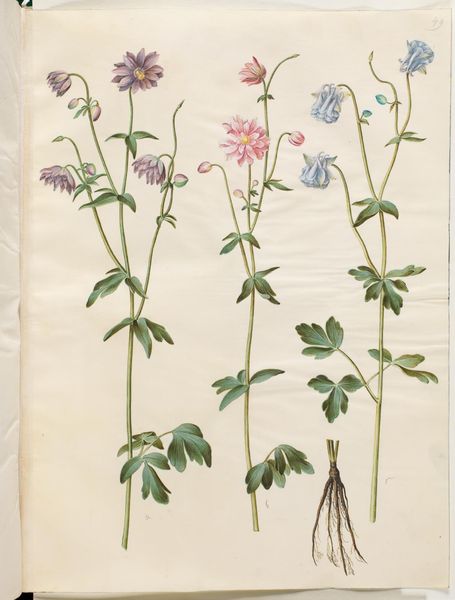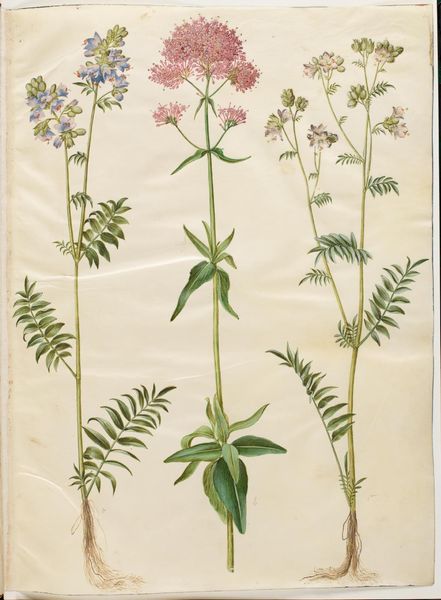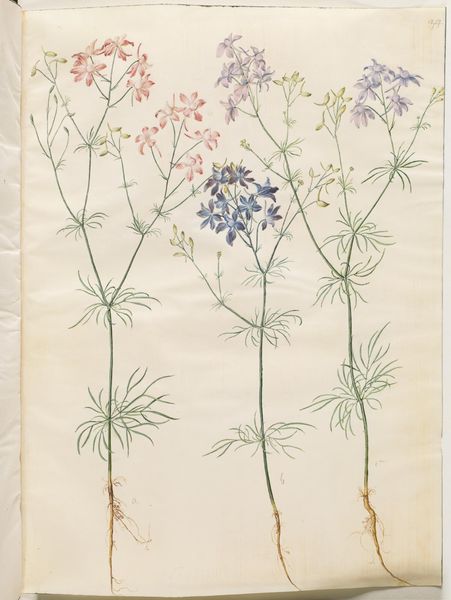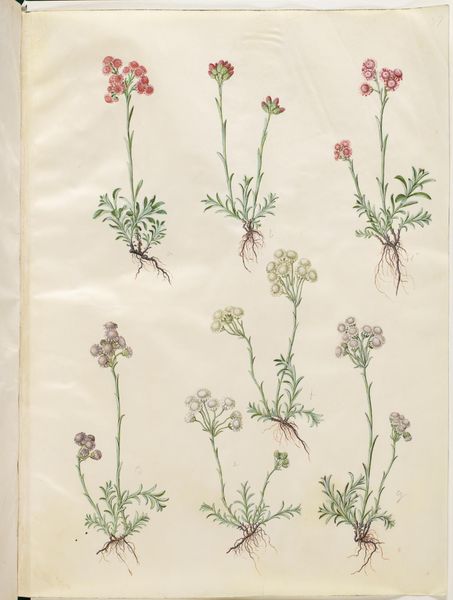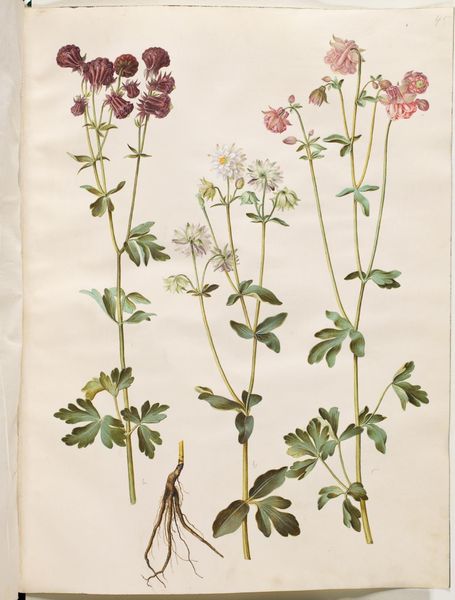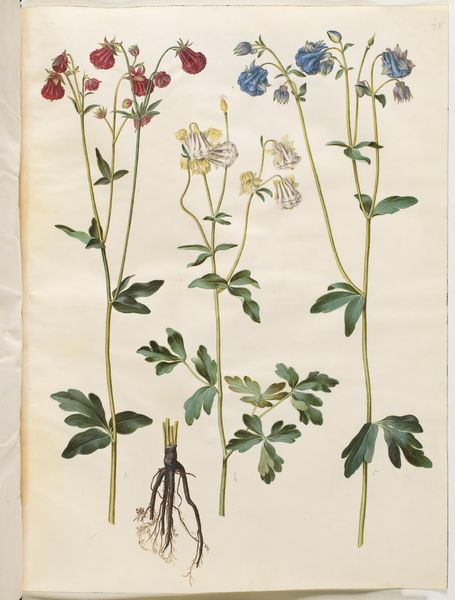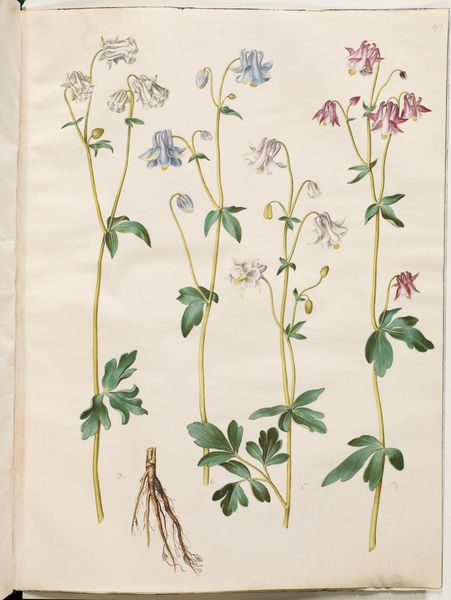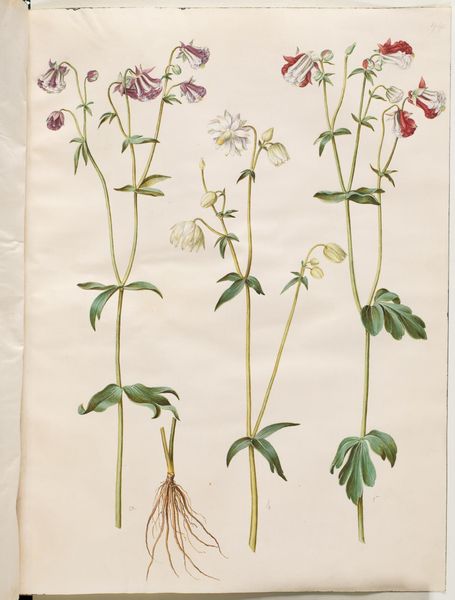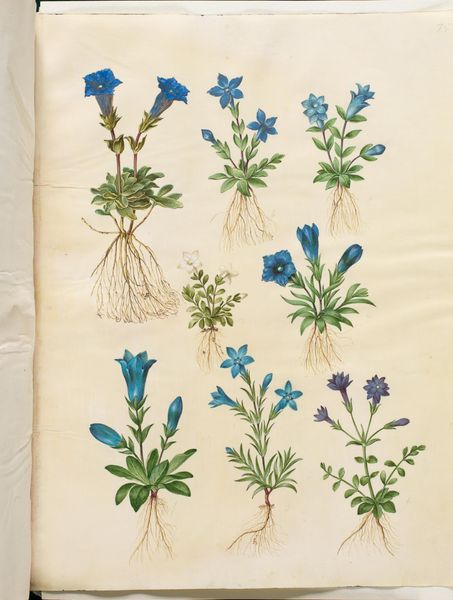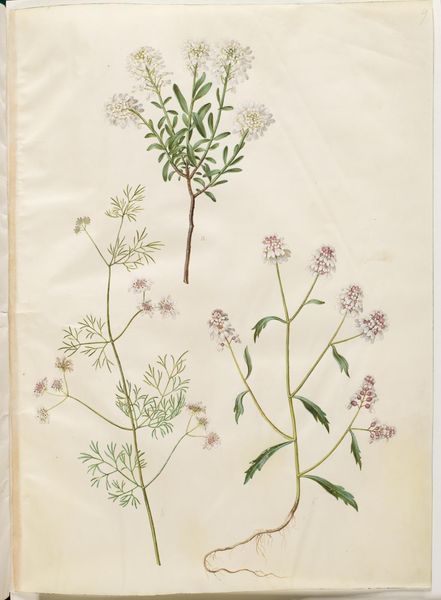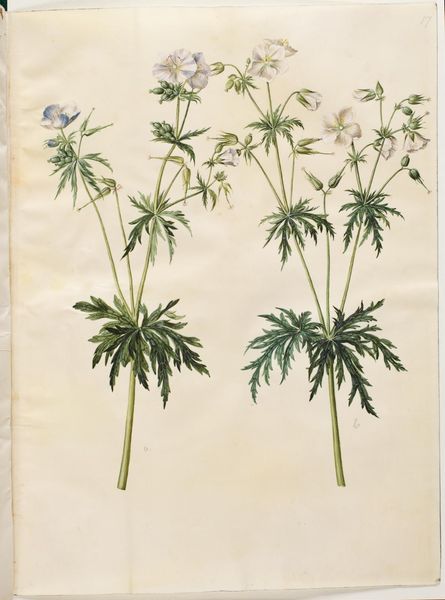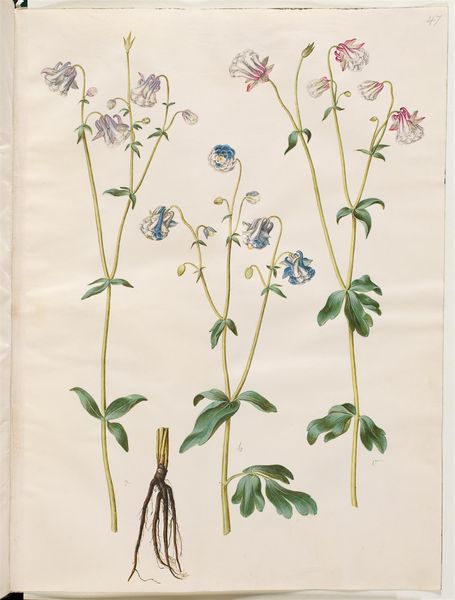
Lupinus pilosus (blå lupin); Lupinus luteus (gul lupin); Lupinus angustifolius (smalbladet lupin); Lupinus albus (hvid lupin) 1649 - 1659
0:00
0:00
drawing, gouache, watercolor
#
drawing
#
water colours
#
gouache
#
watercolor
#
northern-renaissance
#
watercolor
#
realism
Dimensions: 505 mm (height) x 385 mm (width) (bladmaal)
Curator: The Northern Renaissance comes to life in this detailed botanical study from the mid-17th century, attributed to Hans Simon Holtzbecker, showcasing four distinct varieties of lupinus: pilosus, luteus, angustifolius, and albus. Crafted with watercolor and gouache, this artwork reveals Holtzbecker's commitment to realism. Editor: It's remarkably serene. The almost clinical rendering of each plant invites close inspection, but something about the cool palette evokes a sense of tranquil observation, doesn't it? The detail, particularly in the leaf structure, is quite beautiful. Curator: Absolutely. Holtzbecker was meticulous in capturing the textural variances and distinctive forms. Note the variations in color from the intense yellow pigment in the Lupinus luteus to the muted lavender washes in the Lupinus pilosus. These hues were laboriously derived, ground, and mixed, pointing to significant workshop activity, I imagine. The patronage likely stems from a scientific or wealthy benefactor commissioning an accurate plant inventory. Editor: The linearity contrasts with the texture within each form, and this dichotomy draws my eye—there's precision, yes, but a life and movement inside each carefully constructed parameter. The way the light plays, or, is suggested to play, on the leaves also intrigues me. Did he have access to various types of papers, allowing for these subtle tonal gradations? Curator: Access to specific materials significantly shaped artists' choices then. The paper stock, its weave, and even the source would have had an impact on the final product and also, let's remember, on the cost to the buyer. The use of both watercolor and gouache gave Holtzbecker opportunities to build dimension with layering and add more opacity where necessary. Remember that botanical illustration also held importance in the apothecaries of the day. Editor: And yet, outside that mercantile exchange, we see it now as a considered composition; even just as pure, unadulterated color relationships. Each lupinus offers something different in form, line, and hue, playing against one another as parts of the unified picture plane. Curator: Agreed. It allows a moment of observation into 17th century artistry—how resources and skill met demand for detailed documentation and botanical finesse. Editor: An early lesson on value—aesthetic and practical—laid bare.
Comments
No comments
Be the first to comment and join the conversation on the ultimate creative platform.
